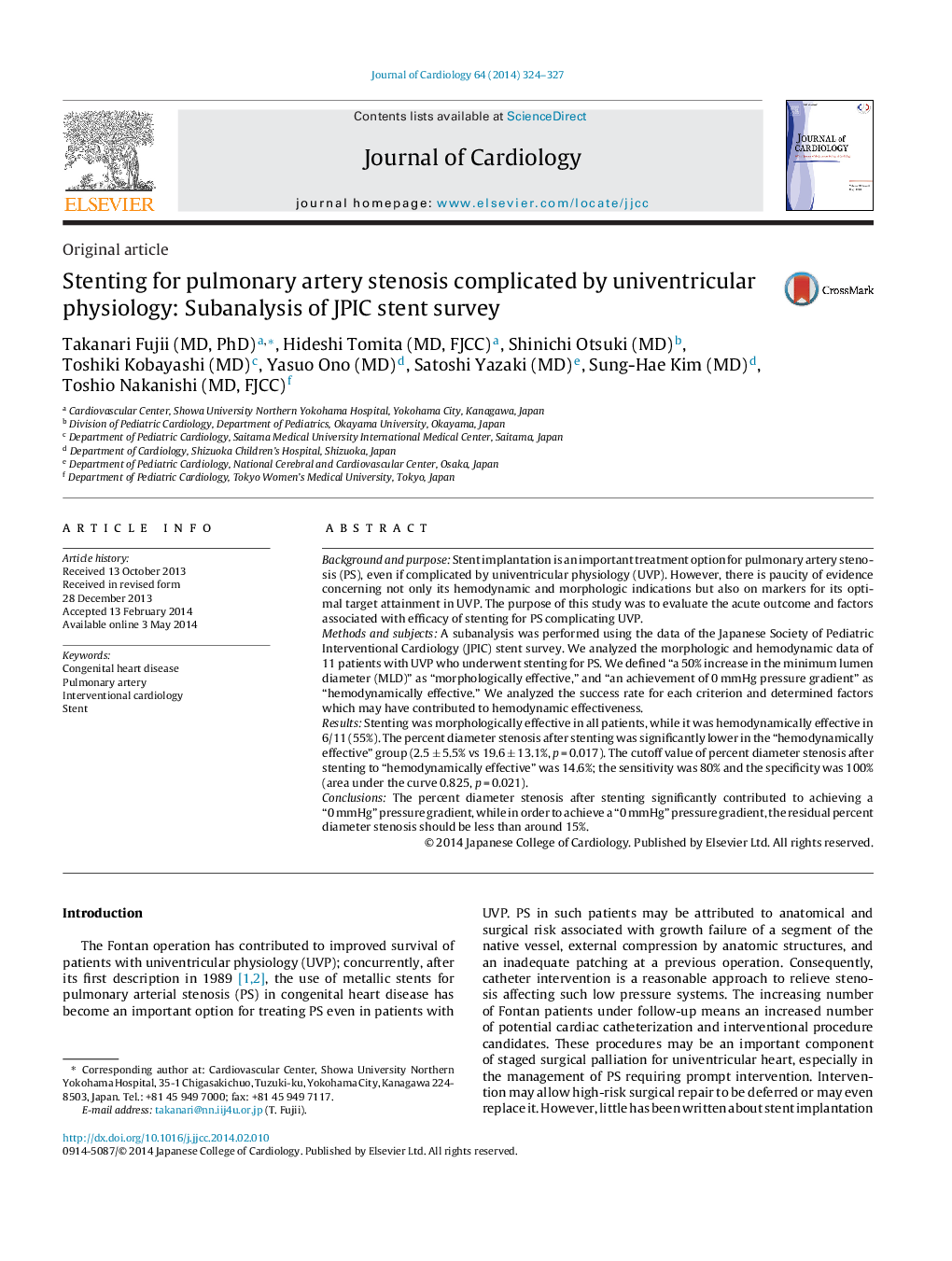| Article ID | Journal | Published Year | Pages | File Type |
|---|---|---|---|---|
| 5984262 | Journal of Cardiology | 2014 | 4 Pages |
Background and purposeStent implantation is an important treatment option for pulmonary artery stenosis (PS), even if complicated by univentricular physiology (UVP). However, there is paucity of evidence concerning not only its hemodynamic and morphologic indications but also on markers for its optimal target attainment in UVP. The purpose of this study was to evaluate the acute outcome and factors associated with efficacy of stenting for PS complicating UVP.Methods and subjectsA subanalysis was performed using the data of the Japanese Society of Pediatric Interventional Cardiology (JPIC) stent survey. We analyzed the morphologic and hemodynamic data of 11 patients with UVP who underwent stenting for PS. We defined “a 50% increase in the minimum lumen diameter (MLD)” as “morphologically effective,” and “an achievement of 0 mmHg pressure gradient” as “hemodynamically effective.” We analyzed the success rate for each criterion and determined factors which may have contributed to hemodynamic effectiveness.ResultsStenting was morphologically effective in all patients, while it was hemodynamically effective in 6/11 (55%). The percent diameter stenosis after stenting was significantly lower in the “hemodynamically effective” group (2.5 ± 5.5% vs 19.6 ± 13.1%, p = 0.017). The cutoff value of percent diameter stenosis after stenting to “hemodynamically effective” was 14.6%; the sensitivity was 80% and the specificity was 100% (area under the curve 0.825, p = 0.021).ConclusionsThe percent diameter stenosis after stenting significantly contributed to achieving a “0 mmHg” pressure gradient, while in order to achieve a “0 mmHg” pressure gradient, the residual percent diameter stenosis should be less than around 15%.
